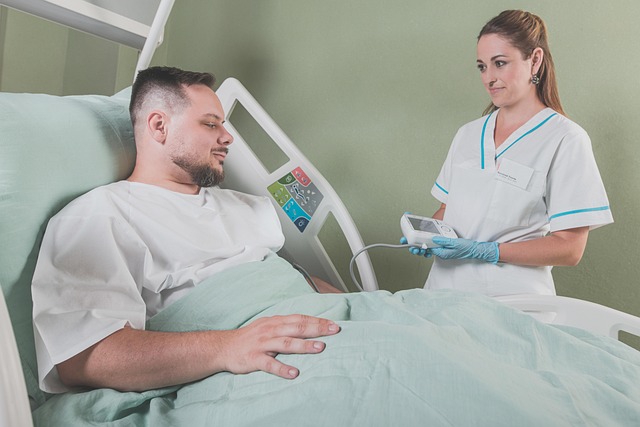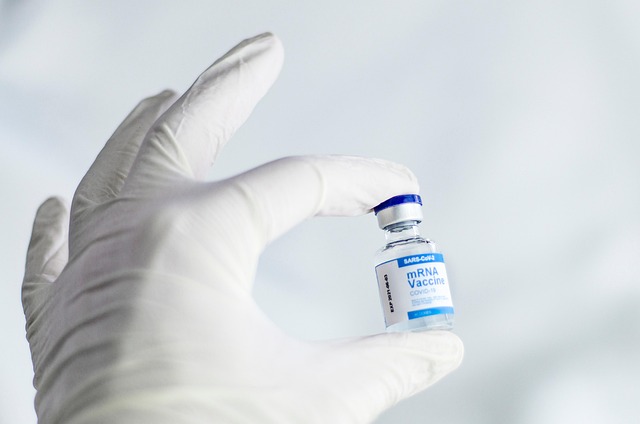Post-traumatic stress disorder (PTSD) is a prevalent mental health condition triggered by traumatic events, causing severe impairment in daily life. Traditional therapies like CBT and Exposure Therapy, backed by research, effectively manage symptoms. Alternative approaches such as EMDR and mindfulness techniques also offer promising relief. Medication, specifically SSRIs and SNRIs, aids in symptom control. Self-care strategies including physical activity, structured routines, and social connections are integral to holistic healing. Support groups and community resources significantly enhance PTSD treatment. Advancements like Prolonged Exposure therapy, virtual reality (VR), and digital therapeutics expand access to evidence-based care. Building resilience through cognitive reframing, mindfulness, and social support fosters long-term recovery for PTSD management.
Post-traumatic stress disorder (PTSD) is a complex mental health condition that affects individuals who have experienced or witnessed traumatic events. This article explores comprehensive strategies for effective PTSD treatment. From understanding the symptoms and causes of this hidden wound, we delve into traditional therapies like Cognitive Behavioral Therapy (CBT) and Exposure Therapy. We also uncover alternative approaches such as Eye Movement Desensitization and Reprocessing (EMDR), and highlight self-care techniques, support groups, medication options, and recent research advancements in PTSD treatment.
Understanding Post-Traumatic Stress Disorder (PTSD): Symptoms and Causes

Post-traumatic stress disorder (PTSD) is a mental health condition that can develop after an individual experiences or witnesses a traumatic event. It’s more than just feeling scared or upset after such an event; PTSD can significantly impair a person’s daily functioning and overall well-being. Symptoms typically include flashbacks, nightmares, severe anxiety, avoidance behaviors, and intense emotional responses to reminders of the trauma. These reoccuring symptoms are the brain’s way of reliving the traumatic experience, which can be extremely distressing.
Causes of PTSD often stem from exposure to life-threatening events such as military combat, natural disasters, violent attacks, or severe accidents. The impact of these traumatic experiences can vary greatly among individuals, with some developing PTSD while others do not. Factors like genetic predisposition, age, and personal resilience play a role in determining one’s vulnerability to the condition. Early intervention and access to effective PTSD treatment are crucial in managing symptoms and improving long-term outcomes for those affected.
Traditional Therapies for PTSD: Cognitive Behavioral Therapy (CBT) and Exposure Therapy

Post-traumatic stress disorder (PTSD) is a common mental health condition that can significantly impact an individual’s daily life and well-being. Traditional therapies play a pivotal role in managing and treating PTSD, offering effective approaches to help individuals process traumatic memories and overcome their symptoms. Two prominent and widely recognized therapeutic methods are Cognitive Behavioral Therapy (CBT) and Exposure Therapy.
CBT for PTSD focuses on identifying and modifying negative thought patterns and behaviors that arise from the traumatic event. Through structured sessions, individuals learn to challenge distorted cognitions and develop healthier coping mechanisms. On the other hand, Exposure Therapy involves gradually confronting traumatic memories or situations in a safe environment. This process helps patients face their fears and reduce the intensity of associated symptoms, such as anxiety and nightmares. Both CBT and Exposure Therapy have extensive research backing their effectiveness, making them go-to choices for PTSD treatment, offering lasting relief and improved quality of life for those affected by this disorder.
Alternative Approaches: Eye Movement Desensitization and Reprocessing (EMDR) and Mindfulness-Based Techniques

In addition to traditional talk therapy, there are alternative approaches that have shown promise in PTSD treatment. One such method is Eye Movement Desensitization and Reprocessing (EMDR), a psychotherapy approach that helps individuals process traumatic memories. During EMDR sessions, patients focus on traumatic memories while simultaneously engaging in bilateral stimulation, typically through side-to-side eye movements, tapping, or tones. This dual focus helps desensitize the individual to the trauma memory, reducing its emotional intensity over time.
Another effective alternative is mindfulness-based techniques. Mindfulness involves paying attention to the present moment without judgment. Through mindfulness meditation, breathing exercises, and other practices, individuals with PTSD can learn to manage their symptoms, reduce anxiety, and gain a greater sense of calm. Research suggests that mindfulness-based therapies can help regulate emotions, improve concentration, and enhance overall well-being for those dealing with PTSD.
Medication Options for Managing PTSD Symptoms

Medication can play a significant role in managing symptoms of post-traumatic stress disorder (PTSD). Selective serotonin reuptake inhibitors (SSRIs) and serotonin-norepinephrine reuptake inhibitors (SNRIs) are commonly prescribed to help regulate mood and reduce anxiety associated with PTSD. These medications work by increasing the levels of certain neurotransmitters, like serotonin and norepinephrine, in the brain, which can improve symptoms such as flashbacks, nightmares, and excessive worry.
While not all individuals with PTSD will respond to medication alone, it often serves as a valuable tool in conjunction with therapy. It’s important to note that finding the right medication and dosage may require time and trial, as every person’s experience with PTSD is unique. Healthcare providers carefully monitor patients’ progress and adjust treatments accordingly to ensure optimal symptom management and an improved quality of life for those affected by PTSD.
Self-Care Strategies for Individuals with PTSD

Self-care is an essential aspect of managing and overcoming post-traumatic stress disorder (PTSD). Individuals with PTSD can benefit from incorporating various strategies into their daily routines to support their mental health and overall well-being. One crucial self-care practice is engaging in regular physical activity, such as walking, yoga, or swimming. Exercise releases endorphins, which act as natural mood lifters, helping to reduce symptoms of anxiety and depression often associated with PTSD. Additionally, it provides a healthy outlet for processing and releasing intense emotions.
Other beneficial self-care strategies include maintaining a structured daily routine, practicing mindfulness through meditation or deep breathing exercises, and ensuring adequate sleep. Eating a balanced diet and staying hydrated are also vital. Connecting with supportive friends or joining support groups can offer a sense of community and understanding. These self-care techniques work in conjunction with professional PTSD treatment methods to create a holistic approach to healing and recovery.
Support Groups and Community Resources for PTSD Treatment

Support groups play a significant role in PTSD treatment, offering individuals a sense of community and understanding. These groups provide a safe space for people affected by PTSD to share their experiences, connect with others facing similar challenges, and learn coping strategies from peers. Many support groups are facilitated by mental health professionals, ensuring guidance and structure while fostering an environment of emotional support.
Community resources, including local therapy centers, non-profit organizations, and online forums, further enhance PTSD treatment. These resources often provide specialized services tailored to the unique needs of individuals with PTSD. Online platforms, in particular, offer accessibility and anonymity, making it easier for those struggling to find help and connect with supportive communities.
Latest Research and Innovations in PTSD Treatment

The latest research in PTSD treatment focuses on innovative approaches, leveraging advancements in neuroscience and technology. One prominent development is Prolonged Exposure (PE) therapy, which has shown promising results. This approach involves gradually exposing individuals to traumatic memories in a safe environment, helping them process and confront their fears more effectively. Virtual reality (VR) technology is also being explored as an adjunctive tool in PE therapy, offering immersive simulations that enhance the therapeutic experience.
Additionally, emerging evidence supports the use of mindfulness-based interventions for PTSD treatment. Techniques such as Mindfulness-Based Cognitive Therapy (MBCT) and Mindfulness Meditation aim to reduce symptoms by promoting present-moment awareness and emotional regulation. These approaches are accessible and adaptable, making them valuable additions to the PTSD treatment arsenal. Furthermore, digital therapeutics are gaining traction, with mobile apps designed to deliver structured cognitive behavioral therapy (CBT) interventions, making evidence-based care more accessible to a wider population.
Building Resilience: Long-Term Management and Recovery from PTSD

Building resilience is a crucial aspect of long-term management and recovery for individuals facing post-traumatic stress disorder (PTSD). It involves developing coping mechanisms that empower individuals to navigate and overcome the challenges posed by PTSD. Through various therapeutic approaches, such as cognitive behavioural therapy (CBT) or eye movement desensitisation and reprocessing (EMDR), individuals learn to reframe traumatic memories, manage overwhelming emotions, and cultivate a sense of safety and control in their daily lives.
This process of resilience-building is not just about overcoming symptoms; it’s about fostering a mindset that promotes overall well-being. By engaging in activities like mindfulness practices, physical exercise, and social support networks, individuals with PTSD can enhance their ability to cope with stress and adversity. These strategies enable them to integrate their traumatic experiences while maintaining a sense of hope and purpose, ultimately facilitating a path towards long-term recovery and improved quality of life.
